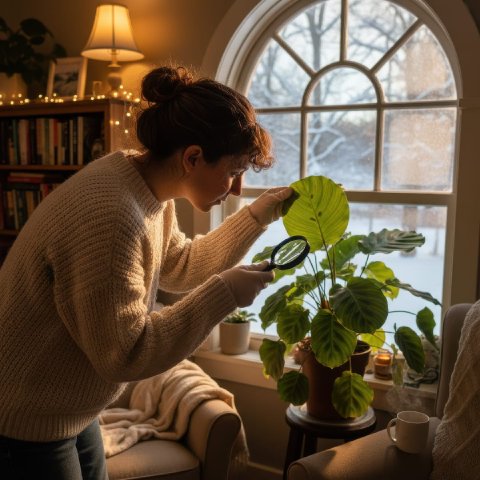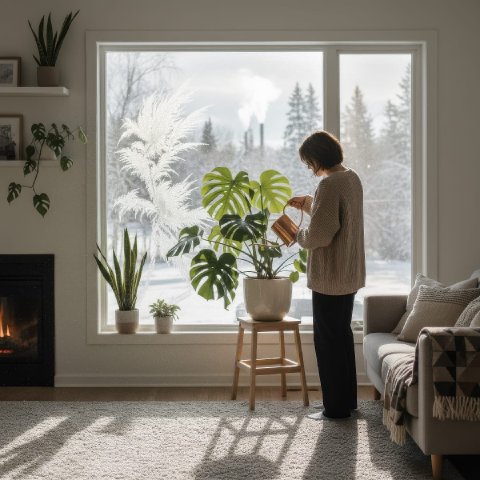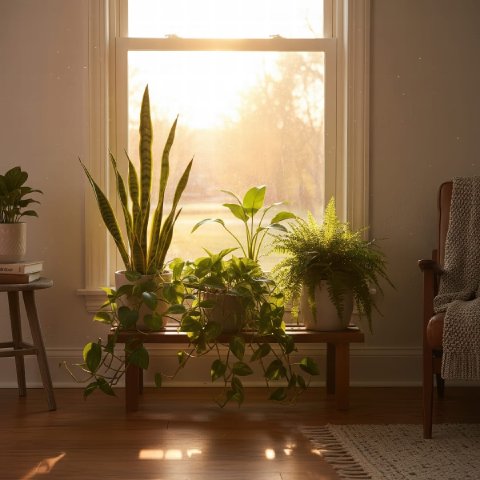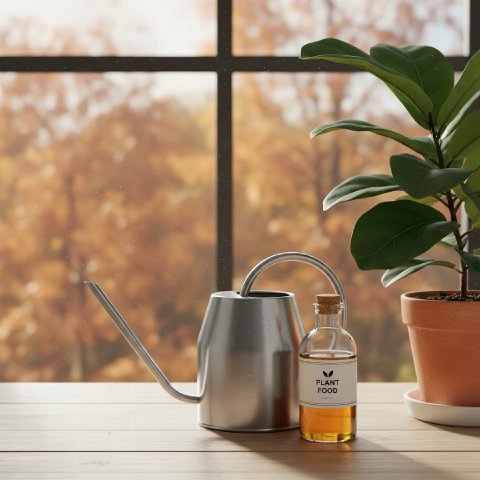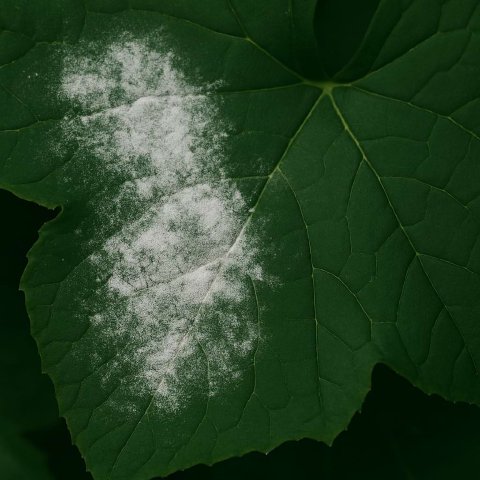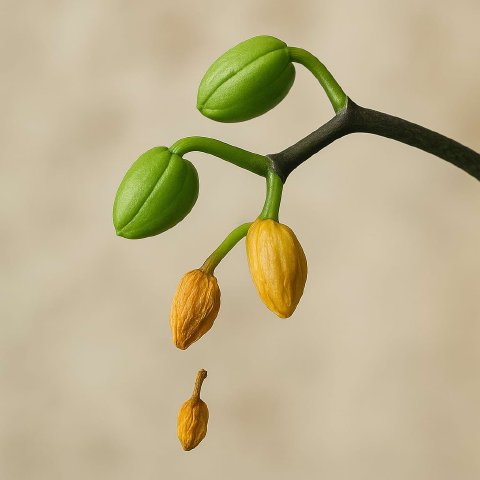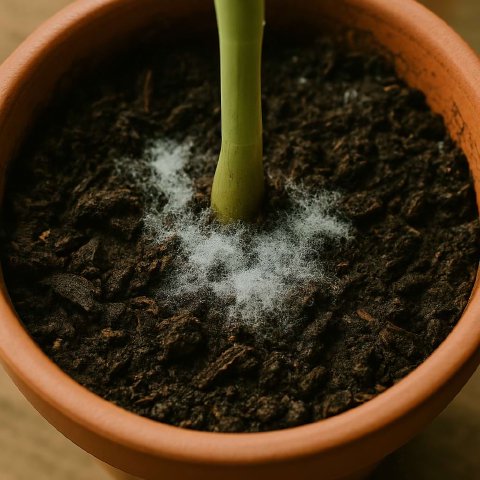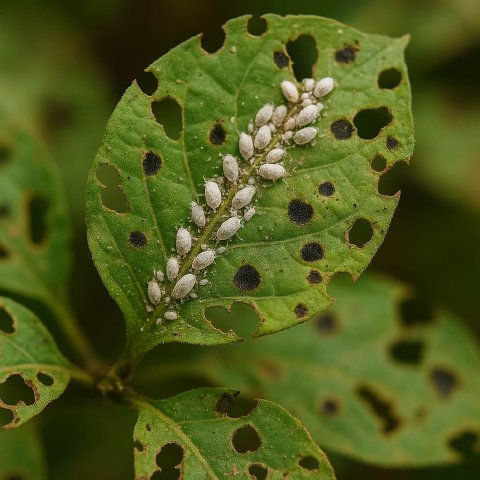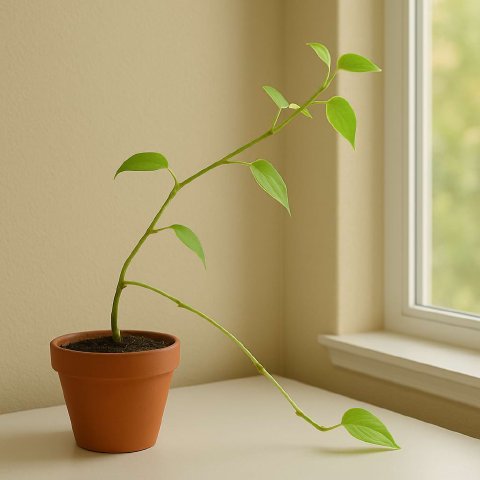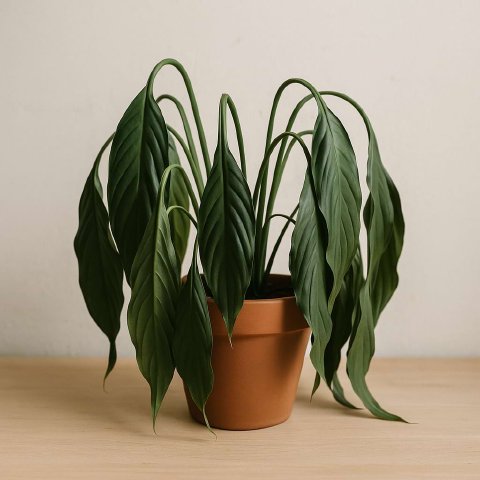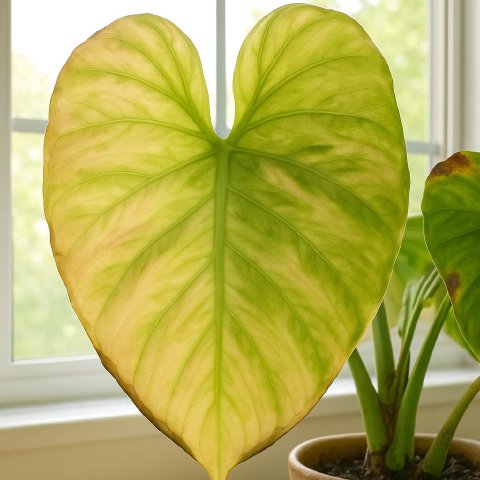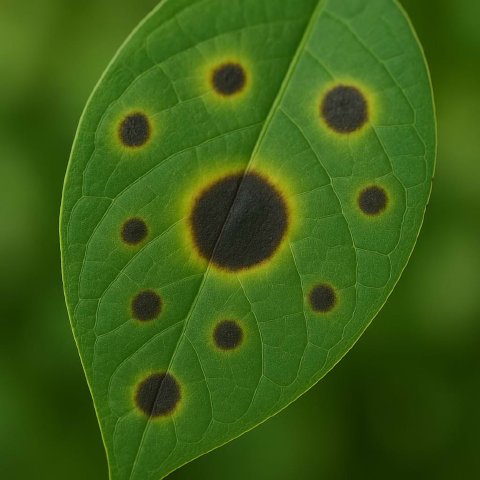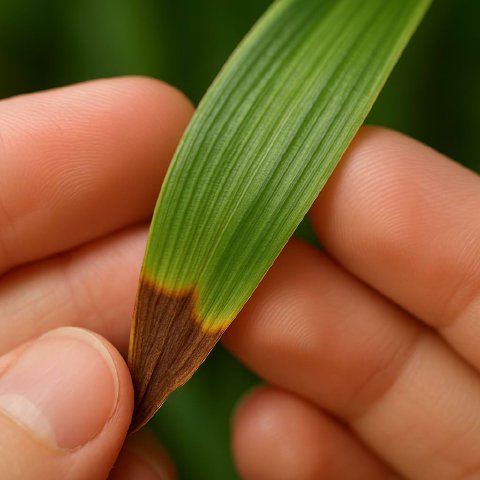🪴 In This Guide 🪴
🍂 1. Yellowing Leaves
This is usually a sign of overwatering, not underwatering. In winter, soil stays wet longer and roots get less oxygen, which can slowly suffocate them.
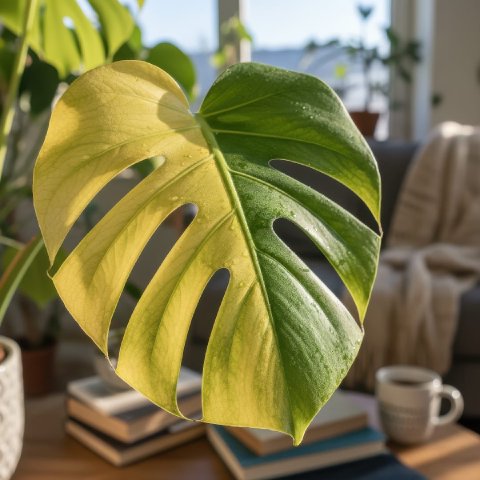
Fix:
- Check the top inch of soil before watering-if it’s damp, wait a few more days.
- Always use pots with drainage holes.
- Empty saucers after watering.
- Move the plant to a brighter location so it can dry faster and use more moisture.
👉 Read more: Yellowing Leaves
🍃 2. Leaf Drop
Sudden leaf drop often follows a sharp temperature change-a cold draft from an open door, or hot, dry air from a heater.
Ficus trees are infamous for shedding their leaves after even one cold night.

Fix:
Keep plants away from drafty windows, exterior doors, and vents.
If it’s already dropped leaves, be patient-it will regrow once temperatures and light stabilize in spring.
👉 Read more: Leaf Drop
🔥 3. Brown or Crispy Edges
Low humidity is the main reason for brown tips and crispy leaf edges in winter. Heaters dry the air, often below 30%, and moisture-loving plants like Calatheas and ferns suffer first.
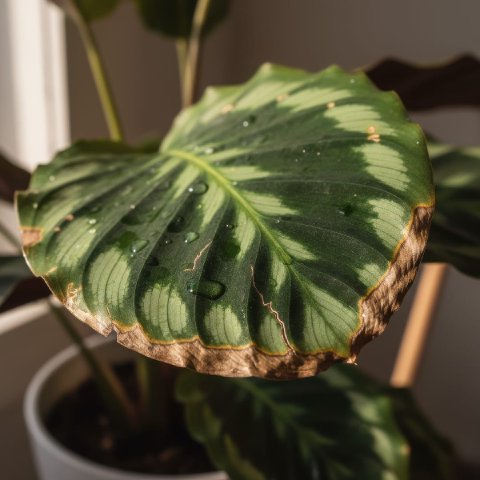
Fix:
Raise humidity using a humidifier, pebble tray, or by grouping plants together.
Skip heavy misting-it helps for only a few minutes and may cause leaf spots.
👉 Read more: Brown or Crispy Edges
👉 Related guide: Boosting Humidity for Indoor Plants in Winter
🌫️ 4. Mold on Soil
A white film or fuzzy mold on soil isn’t dangerous-it just means the surface stays too wet.
It’s a sign of poor air circulation and overwatering.
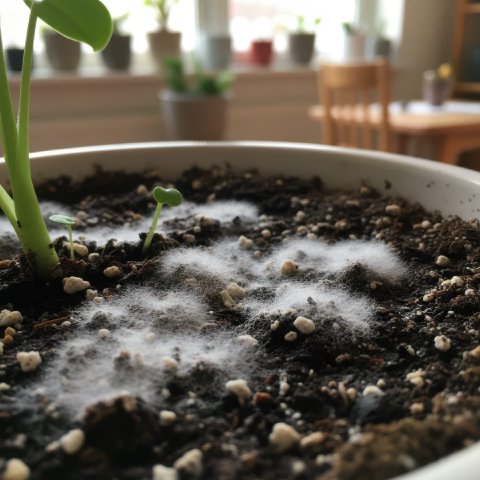
Fix:
Scrape off the moldy layer and let the soil dry before watering again.
Make sure the pot drains well, and stir in a bit of fresh mix or top with fine gravel to keep the surface dry.
👉 Read more: Mold on Soil
💧 5. Drooping or Limp Leaves
Wilting can mean either too much or too little water.
Check the soil-if it’s bone dry, water thoroughly and wait a few hours.
If it’s soggy and the plant stays limp, root rot may be setting in.

Fix:
Gently remove the plant from its pot and inspect the roots.
Healthy roots are firm and white; mushy, brown roots should be trimmed off before repotting into fresh soil.
👉 Read more: Drooping or Limp Leaves
🐛 6. Pests
Dry, warm air invites pests like spider mites and fungus gnats.
Spider mites spin fine webs on leaf undersides, while gnats buzz around damp soil.

Fix:
- Wipe leaves with a soft, damp cloth or a mild soapy water solution.
- Increase humidity to make conditions less favorable for mites.
- Let soil dry between waterings to deter gnats, and use yellow sticky traps to catch adults.
👉 Read more: Pest Damage
👉 Learn more: Pest Prevention in Winter: Spider Mites and Fungus Gnats
🌤️ 7. Stunted or Pale Growth
If new leaves are smaller, pale, or missing color, the problem is usually lack of light.
Winter sunlight is weak and brief, so even bright windows might not be enough.
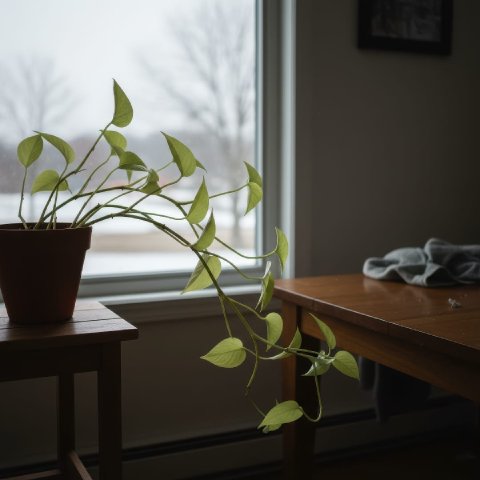
Fix:
Move your plant closer to a sunny window or use a grow light for 10–12 hours a day.
If growth pauses completely, don’t force it with fertilizer-wait for spring.
👉 Read more: Stunted or Pale Growth
👉 Related reading: Providing Enough Light During Short Winter Days
💚 The Takeaway
Winter brings out every weakness in a plant’s setup-less light, more dryness, and sudden temperature swings.
You can’t stop these changes completely, but you can make them gentler.

Focus on stability: moderate watering, consistent temperatures, better light, and a touch of humidity.
Once spring returns, your plants will reward you with fresh, healthy growth.
📚 Related Reading
For a complete seasonal overview, check out our Winter Houseplant Care Checklist.
You might also like:
